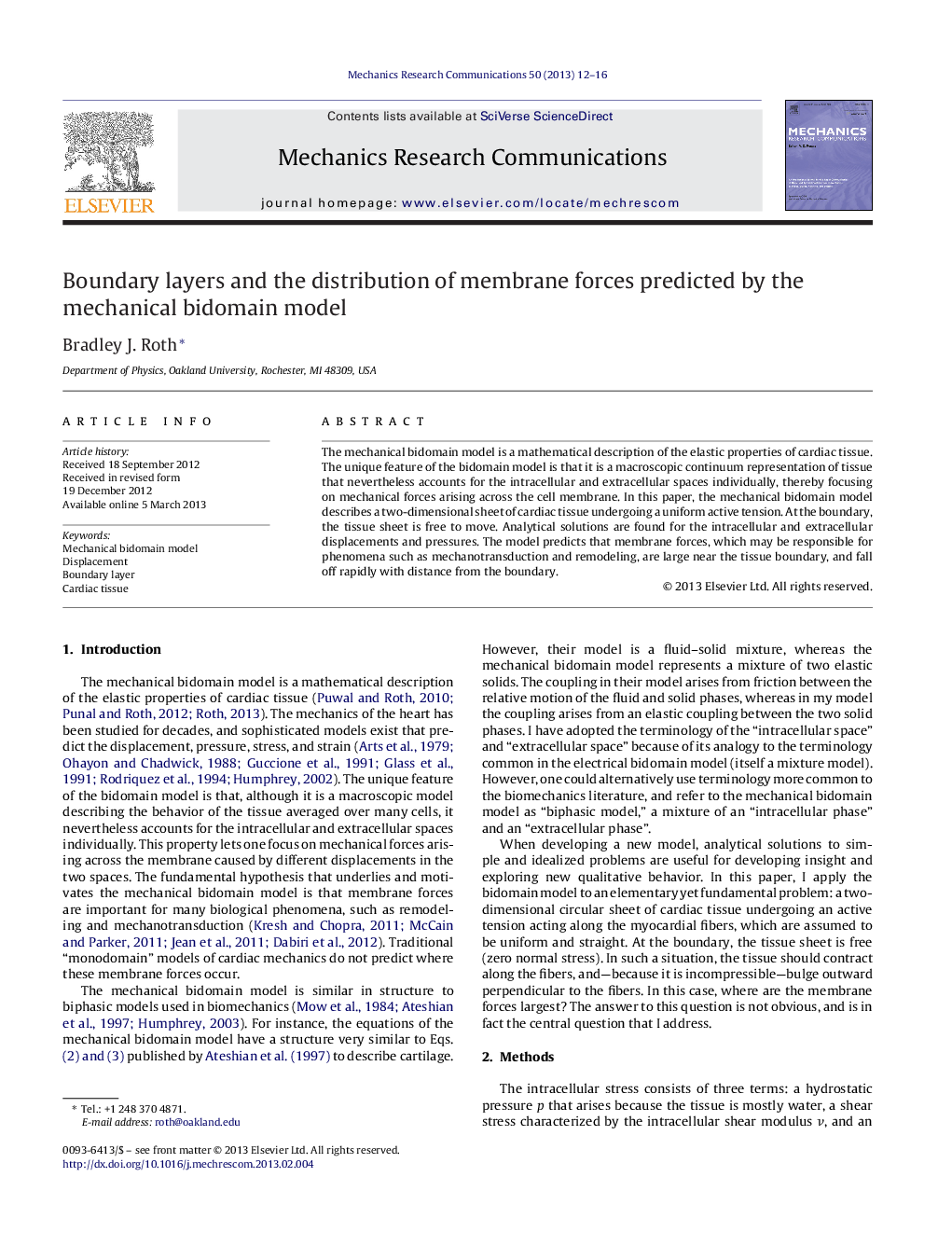| Article ID | Journal | Published Year | Pages | File Type |
|---|---|---|---|---|
| 801579 | Mechanics Research Communications | 2013 | 5 Pages |
The mechanical bidomain model is a mathematical description of the elastic properties of cardiac tissue. The unique feature of the bidomain model is that it is a macroscopic continuum representation of tissue that nevertheless accounts for the intracellular and extracellular spaces individually, thereby focusing on mechanical forces arising across the cell membrane. In this paper, the mechanical bidomain model describes a two-dimensional sheet of cardiac tissue undergoing a uniform active tension. At the boundary, the tissue sheet is free to move. Analytical solutions are found for the intracellular and extracellular displacements and pressures. The model predicts that membrane forces, which may be responsible for phenomena such as mechanotransduction and remodeling, are large near the tissue boundary, and fall off rapidly with distance from the boundary.
► Development of the mechanical bidomain model, which focuses on forces acting across the cell membrane. ► Makes a qualitatively new prediction of a boundary layer of membrane forces. ► Shows how the thickness of the boundary layer depends on the coupling of the intracellular and extracellular spaces. ► Intracellular and extracellular pressures are different. ► Analytical solution provides insight into the bidomain model.
